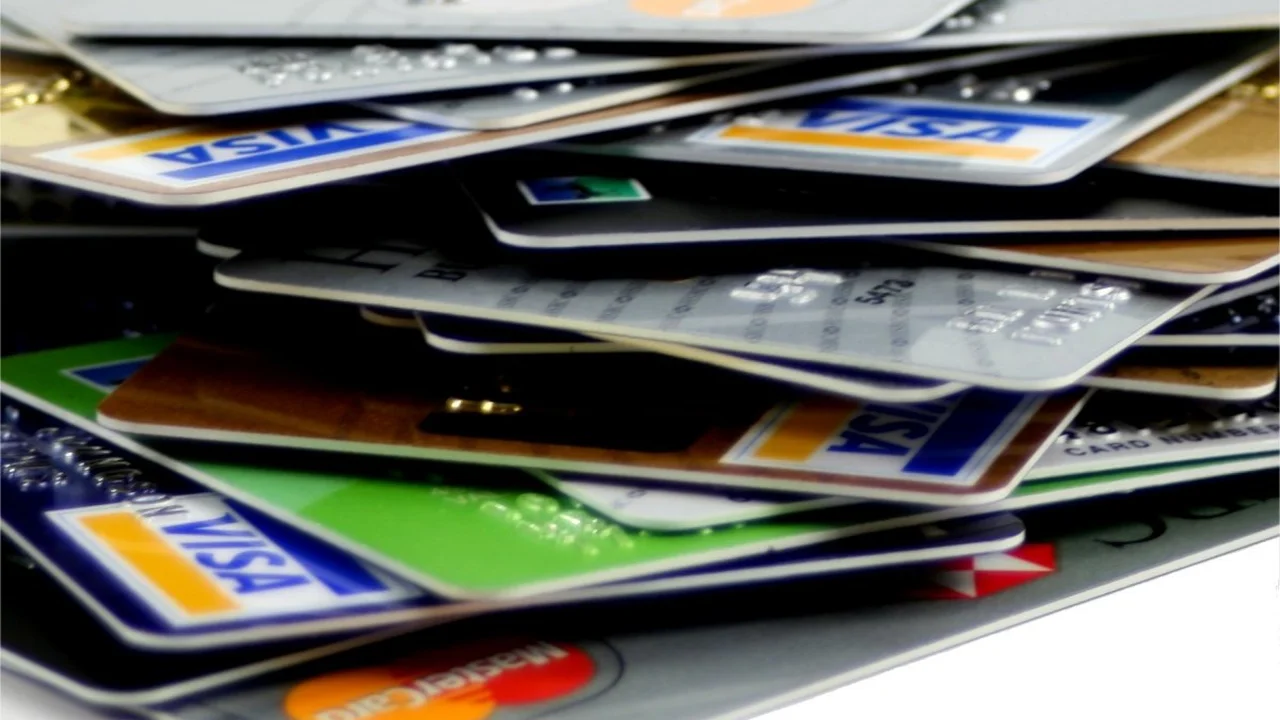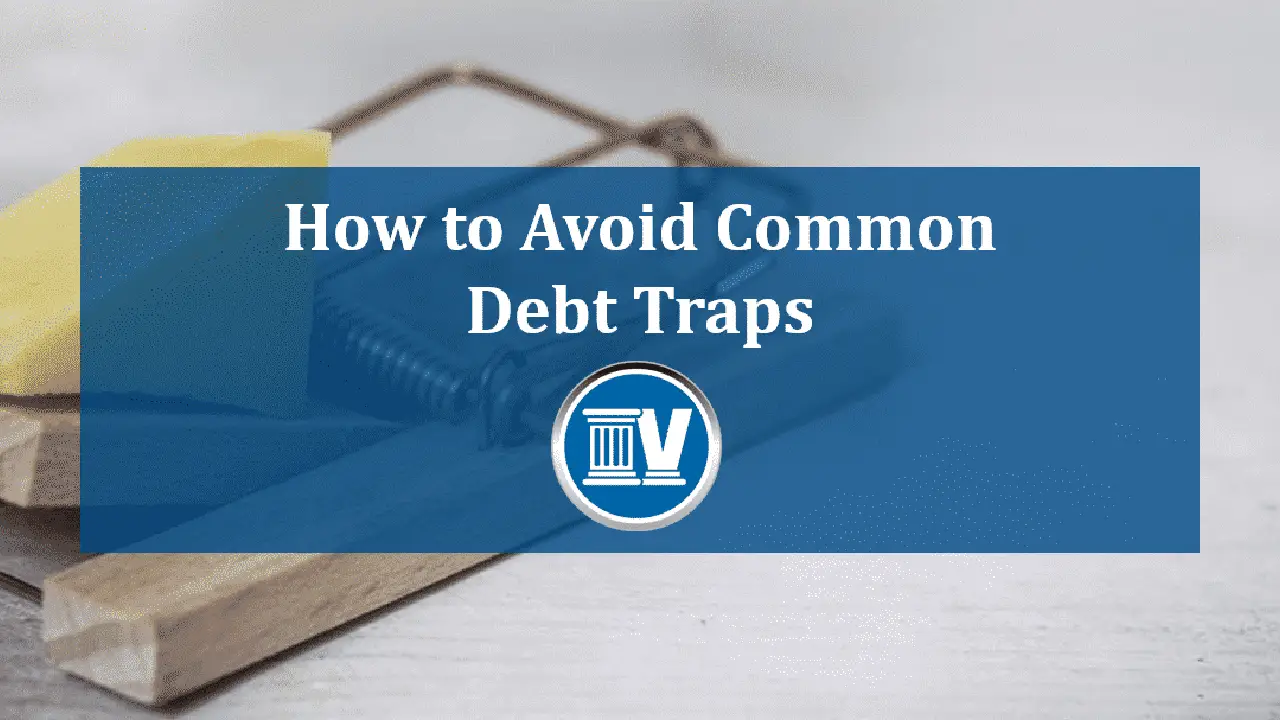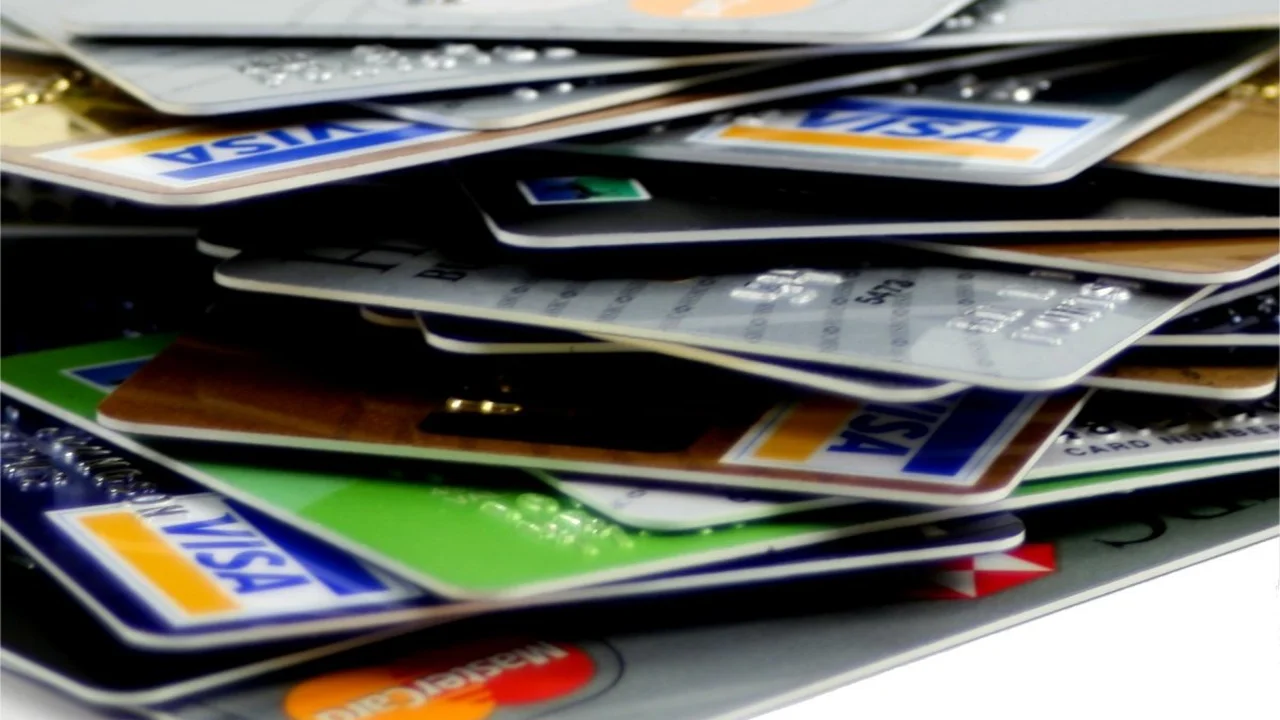5 Common Credit Score Myths Debunked
Separate fact from fiction with our debunking of 5 common credit score myths that could be harming your financial decisions.

Hey there, money-savvy folks! Ever heard something about credit scores that just didn't quite sit right? You're not alone. The world of credit can feel like a maze, full of whispers and old wives' tales. But here's the deal: understanding your credit score is super important for everything from getting a new apartment to buying a car, or even landing certain jobs. So, let's clear the air and bust some of the most common credit score myths that might be holding you back from financial freedom. We're talking about real talk, no jargon, just the facts you need to make smart choices.
H2 Myth 1 Closing Old Credit Accounts Improves Your Credit Score
This is probably one of the most persistent myths out there, and it's a biggie. Many people think that if they close an old credit card account, especially one they don't use anymore, it'll somehow make their credit score look better. The logic often goes, 'fewer accounts, less risk, right?' Wrong! In most cases, closing an old credit account can actually hurt your credit score, and here's why.
The Age of Your Credit History Matters
One of the key factors in your credit score calculation (especially with FICO and VantageScore models) is the length of your credit history. This includes the age of your oldest account and the average age of all your accounts. When you close an old account, you effectively shorten your average credit age, which can ding your score. Think of it like this: a long, positive credit history shows lenders you're a reliable borrower over time. Closing an old, well-maintained account erases some of that valuable history.
Credit Utilization Ratio Takes a Hit
Another huge factor is your credit utilization ratio. This is the amount of credit you're using compared to your total available credit. For example, if you have two credit cards, each with a $5,000 limit, your total available credit is $10,000. If you owe $1,000 across both cards, your utilization is 10% ($1,000 / $10,000). Lenders generally like to see this ratio below 30%, with lower being better.
Now, imagine you close one of those $5,000 limit cards. Your total available credit instantly drops to $5,000. If you still owe that same $1,000, your utilization ratio suddenly jumps to 20% ($1,000 / $5,000). See how that works? Even if you pay off your balances every month, closing an account reduces your overall credit limit, making your utilization ratio appear higher, which can negatively impact your score.
When is it Okay to Close an Account?
There are a few rare instances where closing an account might be okay, or even necessary:
- High Annual Fees: If a card has a high annual fee and you're not getting enough value from its rewards or benefits, it might be worth considering. However, try to transfer the credit limit to another card with the same issuer first, if possible.
- Irresponsible Spending: If you have a credit card that constantly tempts you to overspend and you can't control it, closing it might be a necessary step for your financial well-being, even if it means a temporary dip in your score.
- Fraud or Identity Theft: Obviously, if an account has been compromised, you'll need to close it immediately.
Pro Tip: Instead of closing old, unused accounts, consider keeping them open, especially if they have no annual fee. Just make a small purchase once every few months and pay it off immediately to keep the account active and maintain that long credit history and available credit.
H2 Myth 2 Paying Off a Collection Account Removes it From Your Credit Report
This is another common misconception that can lead to disappointment. Many people believe that once they pay off a debt that has gone to collections, it will magically disappear from their credit report. Unfortunately, that's usually not the case.
Paid Collections Still Show
When an account goes to collections, it's a significant negative mark on your credit report. Paying it off changes its status from 'unpaid collection' to 'paid collection.' While 'paid collection' is certainly better than 'unpaid,' the collection entry itself typically remains on your credit report for up to seven years from the date of the original delinquency. The fact that it was ever in collections is still visible to lenders, even if it's now paid.
The 'Pay for Delete' Strategy
However, there's a strategy called 'pay for delete' that can sometimes work. This is where you negotiate with the collection agency to have the collection account removed from your credit report entirely in exchange for payment. It's not guaranteed, and collection agencies are not legally obligated to agree to it, but it's worth trying, especially if the debt is relatively small or old.
How to attempt a 'Pay for Delete':
- Get it in Writing: Never agree to a 'pay for delete' over the phone. Always get the agreement in writing before you make any payment. The letter should explicitly state that the collection agency will remove the account from all three major credit bureaus (Experian, Equifax, TransUnion) upon receipt of payment.
- Negotiate: You can often negotiate the amount you pay, especially if the debt is old. Start by offering a lower percentage of the total debt.
- Follow Up: After payment, monitor your credit reports to ensure the collection account has been removed as agreed. If not, follow up with the collection agency and provide them with the written agreement.
Important Note: Be wary of any credit repair company that guarantees they can remove legitimate negative items from your credit report. While they can help with disputes, 'pay for delete' is a negotiation, not a guarantee.
H2 Myth 3 You Only Have One Credit Score
Nope, not true! This is a big one that confuses a lot of people. It's easy to think there's just one magical number that defines your creditworthiness, but in reality, you have many credit scores. It's like saying there's only one type of car – there are sedans, SUVs, trucks, and they all serve different purposes.
Multiple Credit Bureaus
First off, there are three major credit bureaus: Experian, Equifax, and TransUnion. Each bureau collects and maintains its own credit report on you. While they all get information from many of the same creditors, there can be slight differences in the data they hold. For example, one creditor might report to only two bureaus, or there might be a delay in reporting to one versus another. Because the underlying data can vary, the scores generated from each bureau's report can also vary.
Different Scoring Models
Beyond the three bureaus, there are also different credit scoring models. The two most common are FICO and VantageScore. These are like different algorithms that analyze the data in your credit report to produce a score. They weigh different factors slightly differently, leading to different scores.
- FICO Scores: These are the most widely used scores by lenders (around 90% of top lenders use a FICO score). There are actually many different versions of FICO scores (FICO Score 8, FICO Score 9, FICO Auto Score, FICO Bankcard Score, etc.), each tailored for specific types of lending. For instance, a FICO Auto Score might put more emphasis on your history with car loans.
- VantageScores: This model was developed by the three credit bureaus as an alternative to FICO. VantageScore 3.0 and 4.0 are commonly seen. They also have different versions and can be a good indicator of your credit health, often used by free credit monitoring services.
What Does This Mean for You?
It means that when you check your credit score, the number you see depends on which bureau's data was used and which scoring model was applied. Don't be alarmed if you see different scores from different sources. It's completely normal. The important thing is to monitor your scores regularly and understand the general trend. If one score drops significantly, it's a good idea to investigate why.
Recommended Credit Score Monitoring Tools:
To keep an eye on your various scores and reports, here are a few reliable options:
- Experian: Offers a free FICO Score 8 and credit report. They also have premium services for more detailed insights.
- Credit Karma: Provides free VantageScore 3.0 scores from TransUnion and Equifax, along with credit reports. Great for general monitoring.
- Credit Sesame: Similar to Credit Karma, offering a free VantageScore and credit report analysis.
- MyFICO: The official source for FICO scores. They offer various plans to access different FICO versions, which can be useful if you're applying for a specific type of loan (e.g., mortgage).
H2 Myth 4 Checking Your Own Credit Score Harms It
This is another myth that prevents people from doing something really smart: checking their own credit regularly! Let's put this one to bed right now. Checking your own credit score or report does NOT hurt your credit score. Period.
Soft Inquiries vs. Hard Inquiries
The confusion here stems from the difference between 'soft inquiries' and 'hard inquiries.'
- Soft Inquiries: These happen when you check your own credit score or report, when a potential employer runs a background check, or when a credit card company pre-approves you for an offer. Soft inquiries are visible only to you and do not affect your credit score. They're like peeking at your own report card – it doesn't change your grades.
- Hard Inquiries: These occur when you apply for new credit, such as a credit card, a loan (auto, mortgage, personal), or a new line of credit. When a lender pulls your credit report to make a lending decision, it's a hard inquiry. Hard inquiries can temporarily ding your credit score by a few points (usually 1-5 points) and remain on your report for two years, though their impact lessens over time. Too many hard inquiries in a short period can signal to lenders that you're a risky borrower.
Why You SHOULD Check Your Credit Regularly
Given that checking your own credit is a soft inquiry and doesn't hurt your score, there's absolutely no reason not to do it. In fact, it's highly recommended! Here's why:
- Catch Errors: Credit reports can contain errors, and these errors can negatively impact your score. Regularly checking your report allows you to spot and dispute inaccuracies.
- Detect Fraud: Identity theft is a real threat. Monitoring your credit report can help you identify fraudulent accounts opened in your name or suspicious activity early on.
- Track Progress: If you're actively working to improve your credit, checking your score and report helps you track your progress and see if your strategies are working.
Where to Get Your Free Credit Reports and Scores:
You're entitled to a free credit report from each of the three major bureaus once every 12 months. The official source for these is AnnualCreditReport.com. You can also get free scores and reports from services like Credit Karma, Credit Sesame, and Experian, as mentioned earlier.
H2 Myth 5 Carrying a Balance on Your Credit Card Helps Your Credit Score
This is a classic myth that can cost you a lot of money in interest! The idea that you need to carry a balance on your credit card to show lenders you're using credit responsibly is completely false. In fact, it's the opposite of what you should be doing.
Credit Utilization is Key, Not Carrying a Balance
What lenders want to see is that you use your credit, but you don't over-utilize it. This goes back to the credit utilization ratio we talked about earlier. Using a small portion of your available credit (ideally under 30%) and paying it off in full and on time every month is the best way to demonstrate responsible credit behavior. You get all the benefits of showing credit activity without paying a dime in interest.
The Cost of Carrying a Balance
When you carry a balance, you're essentially borrowing money from the credit card company, and they charge you interest on that borrowed amount. Credit card interest rates can be very high, often 15% to 25% or even more. This means that if you carry a balance, you're throwing money away on interest charges that could be used for savings, investments, or other financial goals.
How to Use Credit Cards Responsibly for a Good Score:
- Pay in Full: Always aim to pay your credit card statement balance in full by the due date. This avoids interest charges and shows perfect payment history.
- Keep Utilization Low: Try to keep your credit utilization ratio below 30%. If you have a $1,000 credit limit, try not to let your balance exceed $300 before paying it off.
- Automate Payments: Set up automatic payments for at least the minimum amount to avoid late fees and negative marks on your report. Even better, set it to pay the full statement balance.
- Use It, Don't Abuse It: Use your credit cards for everyday purchases you can afford to pay off immediately. This keeps the accounts active and builds positive payment history.
Credit Card Products for Responsible Use:
If you're looking for credit cards that encourage responsible use and help build credit, here are a few types and examples:
1. Secured Credit Cards (Great for Building/Rebuilding Credit)
These cards require a security deposit, which typically becomes your credit limit. They're excellent for those with no credit or bad credit because the deposit minimizes risk for the issuer. They report to credit bureaus, helping you build a positive payment history.
- Product Example: Discover it® Secured Credit Card
- Features: No annual fee, reports to all three major credit bureaus, offers cash back rewards (1% on all purchases, 2% at gas stations and restaurants on up to $1,000 in combined purchases each quarter), and Discover matches all the cash back you've earned at the end of your first year. After 7 months, Discover automatically reviews your account to see if you can transition to an unsecured card and get your deposit back.
- Use Case: Perfect for individuals looking to establish credit for the first time or rebuild credit after financial difficulties. The cash back is a nice bonus for a secured card.
- Typical Deposit/Limit: $200 - $2,500 (your deposit becomes your credit limit).
- APR: Varies, typically around 25.99% Variable.
- Product Example: Capital One Platinum Secured Credit Card
- Features: No annual fee, reports to all three major credit bureaus, offers a path to a higher credit line after 6 months of on-time payments. Some applicants may qualify for a lower security deposit ($49, $99, or $200 for a $200 credit line).
- Use Case: Another solid choice for credit building, especially if you can qualify for the lower deposit options. Focuses purely on credit building without rewards.
- Typical Deposit/Limit: $49, $99, or $200 for an initial $200 credit line.
- APR: Varies, typically around 29.99% Variable.
2. Student Credit Cards (For College Students)
Designed for college students, these cards often have lower credit limits and sometimes offer rewards. They're a great way for students to start building credit responsibly.
- Product Example: Discover it® Student Cash Back
- Features: No annual fee, 5% cash back on everyday purchases at different places each quarter (up to quarterly maximum, then 1%), 1% on all other purchases. Discover matches all the cash back you've earned at the end of your first year. Good Grades Reward ($20 statement credit each school year your GPA is 3.0 or higher for up to 5 years).
- Use Case: Ideal for students who want to earn rewards while building credit. The Good Grades Reward is a unique perk.
- Typical Limit: Varies, often starting around $500 - $1,500.
- APR: Intro APR for 6 months, then a variable APR (e.g., 18.24% - 27.24%).
3. Low-Interest/No Annual Fee Cards (For Established Credit)
Once you have good credit, these cards are excellent for everyday spending and keeping utilization low without incurring extra costs.
- Product Example: Citi® Double Cash Card
- Features: No annual fee, earns 2% cash back on every purchase (1% when you buy, 1% when you pay).
- Use Case: Fantastic for general spending. If you pay your balance in full, you effectively get 2% back on everything without any category tracking.
- Typical Limit: Varies widely based on creditworthiness, often $2,000+.
- APR: Intro APR for 18 months on balance transfers, then a variable APR (e.g., 19.24% - 29.24%).
- Product Example: Chase Freedom Unlimited®
- Features: No annual fee, earns 5% cash back on travel purchased through Chase Ultimate Rewards®, 3% on dining and drugstore purchases, and 1.5% on all other purchases.
- Use Case: Great for those who want solid cash back on everyday spending categories without an annual fee.
- Typical Limit: Varies widely based on creditworthiness, often $2,000+.
- APR: Intro APR for 15 months on purchases and balance transfers, then a variable APR (e.g., 20.49% - 29.24%).
Remember, the best way to use any credit card to improve your score is to make small purchases you can easily afford, and then pay the statement balance in full by the due date every single month. This builds a strong payment history and keeps your utilization low, which are the two biggest factors in your credit score.
H2 The Real Deal About Credit Scores Your Financial Health
So, there you have it! We've busted five of the most common credit score myths. Understanding these truths can empower you to make better financial decisions and avoid common pitfalls. Your credit score isn't some mysterious, unchangeable entity; it's a reflection of your financial behavior, and you have the power to influence it positively.
Always remember to:
- Keep old, positive accounts open.
- Negotiate 'pay for delete' for collections, but don't expect them to vanish automatically.
- Know that you have multiple scores, and that's normal.
- Check your own credit regularly – it's free and safe!
- Pay your credit card balances in full every month to avoid interest and build excellent credit.
By focusing on these fundamental principles, you'll be well on your way to a healthier credit profile and a stronger financial future. Keep learning, keep monitoring, and keep making those smart money moves!
:max_bytes(150000):strip_icc()/277019-baked-pork-chops-with-cream-of-mushroom-soup-DDMFS-beauty-4x3-BG-7505-5762b731cf30447d9cbbbbbf387beafa.jpg)






